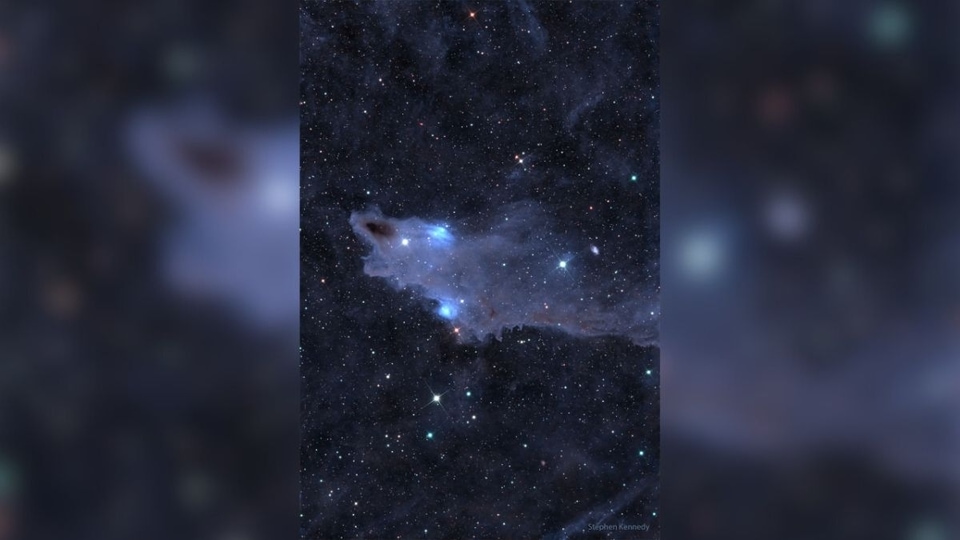NASA Astronomy Picture of the Day 19 June 2023: Spooky Lagoon Nebula!
NASA Astronomy Picture of the Day for June 19, 2023, features a breathtaking view of the center of Lagoon Nebula. What is it? NASA explains.






 View all Images
View all ImagesNebulae are vast cosmic formations consisting of dust and gas -- which originate from various sources, such as the ejected material of a dying star, like a supernova explosion. Moreover, certain nebulae serve as fertile grounds where the birth of new stars begins. That's why, these particular nebulae are often known as "star nurseries." One such nebula is the Lagoon Nebula.
Today's NASA Astronomy Picture of the Day is a spooky snapshot of the center of the Lagoon Nebula. In this image, in the heart of the Lagoon Nebula, a breathtaking spectacle of star formation unfolds. NASA has explained that positioned near the center of the captivating image, two elongated, funnel-shaped clouds emerge, stretching about half a light-year in length. These magnificent formations are the result of the powerful stellar winds and the radiant energy emitted by the intense starlight.
NASA Astronomy Picture of the Day explaination
In the image, there is a tremendously bright star nearby known as Herschel 36 that lights the area. Vast walls of dust hide and redden other hot young stars. As the energy emitted by these stars interacts with the surrounding cool dust and gas, significant temperature variations arise in adjacent regions.
You will be surprised to know that this spooky image spans a massive 15 light-years, and combines images captured in four different colours by the Hubble Space Telescope during its orbital mission. The Lagoon Nebula, also known as M8, lies about 5000 light-years distant toward the constellation of the Archer (Sagittarius). The Lagoon Nebula also referred to as M8, resides roughly 5000 light years away, situated in the direction of the constellation Sagittarius, commonly known as the Archer.
About Herschel 36 star
NASA says that the colossal Herschel 36 star has a mass 32 times more than that of our Sun, with a temperature of 40,000 degrees Kelvin. Impressively, it spans nearly nine times the diameter of our Sun. Known as Herschel 36, this celestial body remains exceptionally active due to its youthful age, merely 1 million years old. Given its substantial mass, it is expected to continue its existence for another 5 million years, NASA mentioned. In contrast, our relatively smaller Sun has already reached the age of 5 billion years and is expected to retain for an additional 5 billion years.
Catch all the Latest Tech News, Mobile News, Laptop News, Gaming news, Wearables News , How To News, also keep up with us on Whatsapp channel,Twitter, Facebook, Google News, and Instagram. For our latest videos, subscribe to our YouTube channel.
































